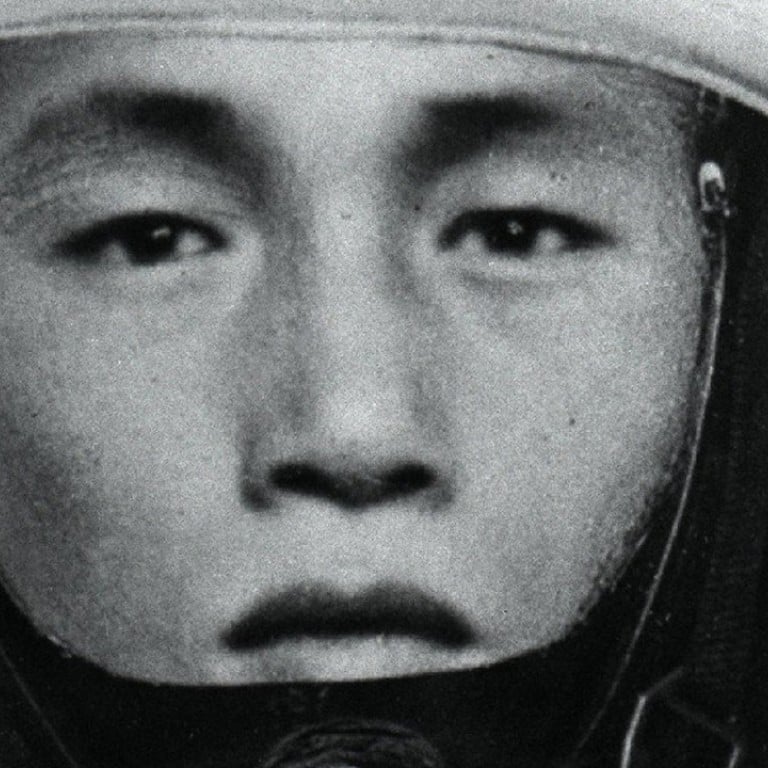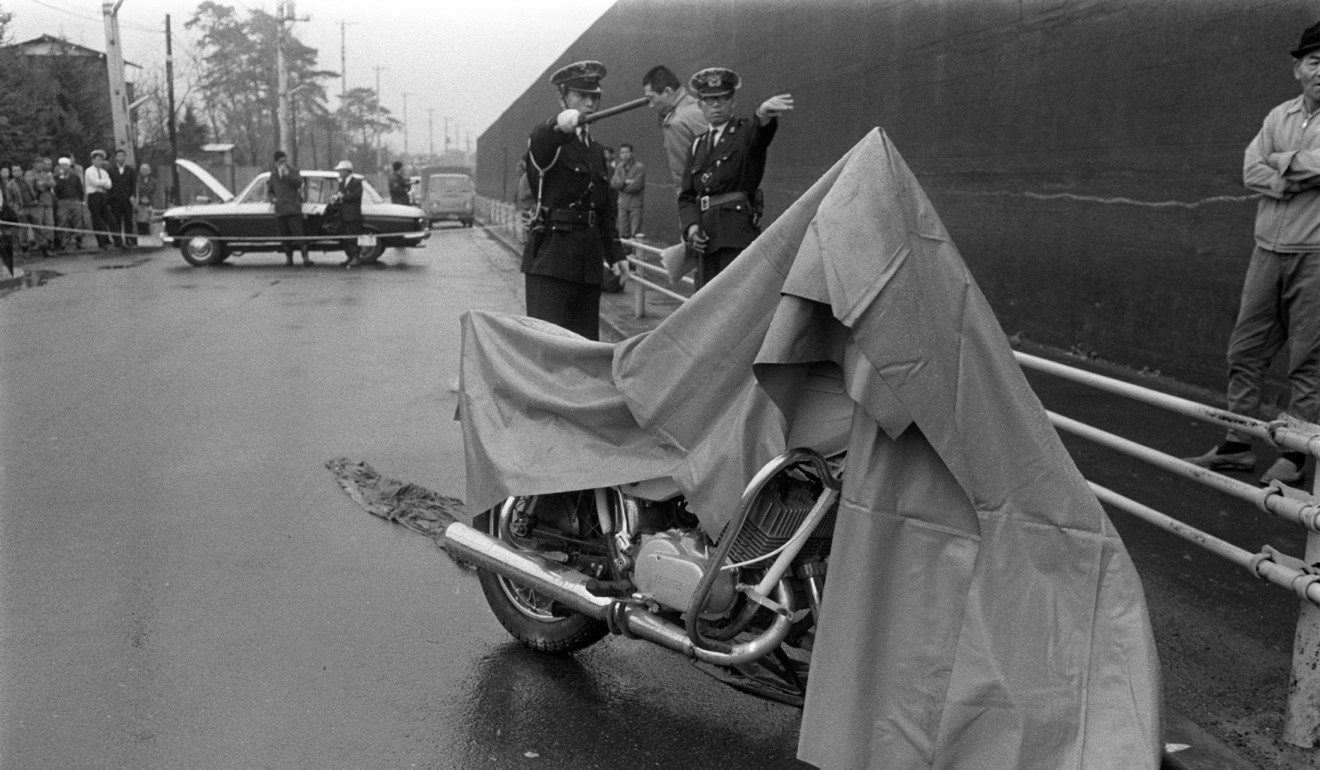
Who was the mysterious motorcyclist behind infamous Japanese heist? After 50 years, the case remains unsolved
- In 1968, a young man posing as a police officer waved down a car carrying 294 million yen. He drove away with the loot and his identity remains unknown
It has been 50 years since one of Japan’s biggest and most brazen heists, and mystery still surrounds the identity and fate of the perpetrator. Yet such is the fascination with the nation’s most notorious cold case that a new tour of key locations in the robbery is massively oversubscribed.
Those with an interest in the robbery – and in the man who committed it – suggest that if he has not yet been identified, he probably never will.
Early on the morning of December 10, 1968, a man in the uniform of an officer in the Tokyo Metropolitan Police’s motorcycle unit waved down a car owned by the Nihon Shintaku Bank as it was transporting slightly more than 294 million yen – worth about US$817,500 at 1968 exchange rates – in winter bonuses to the employees of Toshiba’s factory in Fuchu, a suburb of west Tokyo. Adjusted for Japanese inflation, the sum would be worth almost US$10 million in 2018.

The young motorcyclist told the four bank employees in the car that criminals had blown up the home of their branch manager and dynamite had been planted in the car they were driving. The alarmed bank staff stepped out of the car as the “police officer” crawled beneath the vehicle in search of the bomb. Smoke and flames suddenly belched from beneath the vehicle and the patrolman emerged, shouting that it was about to explode. As the bank staff fled, the thief calmly stepped into the car and drove away.
The bank employees later told investigators they had accepted the motorcyclist’s story because the manager had received threatening letters, while the smoke and flames were caused by a flare dropped beneath the car.
Police were able to confirm the thief drove the car to a park where he transferred the boxes containing the money to another car stolen earlier.
One of the most convincing suggestions was that he was a police officer or the son of a serving officer
After that, the trail went cold, despite the police releasing a black-and-white artist’s impression of the young man.
Under pressure to solve a case that was quickly dubbed the “300 million Yen Robbery” in the media, police repeatedly quizzed young men with motorcycles living in west Tokyo but came up empty-handed.
The 19-year-old son of a serving police officer was brought in as a suspect but he committed suicide and was subsequently ruled out of the investigation. Another potential suspect was ruled out because he could prove he was taking an examination, while a third possible perpetrator refused to cooperate with the investigation and police were unable to find sufficient evidence to prosecute him.
In December 1975, the statute of limitations in the case passed without an arrest, meaning the thief would now be able to identify himself without fear of prosecution. No one has come forward. Speculation about his identity continues to this day.
“One of the most convincing suggestions was that he was a police officer or the son of a serving officer, which would explain how he knew about police procedures and how he obtained the uniform, but also how he was able to evade the subsequent search,” said Makoto Watanabe, an associate professor of media and communications at Hokkaido Bunkyo University.
Born shortly after the robbery, Watanabe said he can still recall the case being a topic of conversation as he was growing up.
“It was also rumoured that it would have had to be someone with inside knowledge of the bank or its procedures for transporting money, the route the car was going to take and so on, but the police never linked any of the employees with the robbery,” he said.
The scale and audacity of the crime impressed people back in 1968 and would also impress people if it happened today
A number of films have also been based loosely on the robbery, with Watanabe’s favourite fictional portrayal suggesting the son of a senior politician was behind the heist and had been protected by his powerful father to avert his own political demise. Yet another suggestion was that the perpetrator had links to the US military and was able to get the money out of the country, Watanabe said.
“The scale and audacity of the crime impressed people back in 1968 and would also impress people if it happened today,” he said. “But it was also the fact that he got away clean when a crime of this magnitude would usually guarantee that the police eventually caught him.
“It’s the mystery of who did it and then how he managed to keep it quiet for half a century that still captivates people today.”
A reporter with the Shukan Heisei news magazine claimed in the 1980s to have identified the perpetrator as Yuji Ogata, who apparently admitted to carrying out the heist and evading the police dragnet. That story fell apart when his family said he had been so in debt that he borrowed money from them after the robbery and that he was a notorious teller of tall tales.
The failure of the police to make an arrest in the case has ensured it retains an aura of mystery, according to officials of taxi company Sanwa Koutsu Tama, which in November started special tours of the main locations that feature in the heist. To date, the five tours the company has run have been oversubscribed by eight times the capacity.

